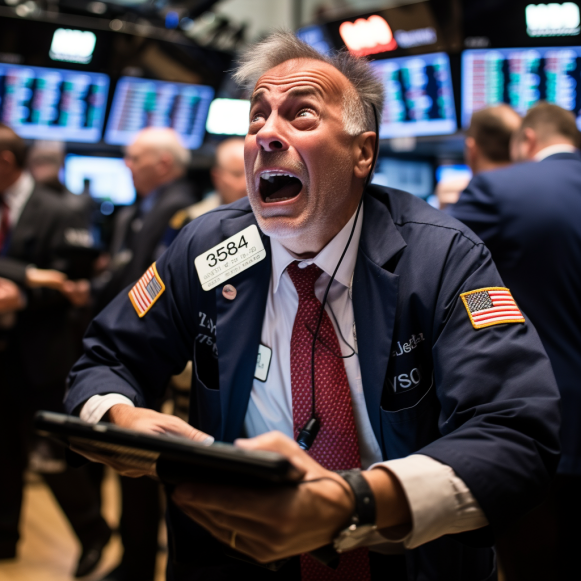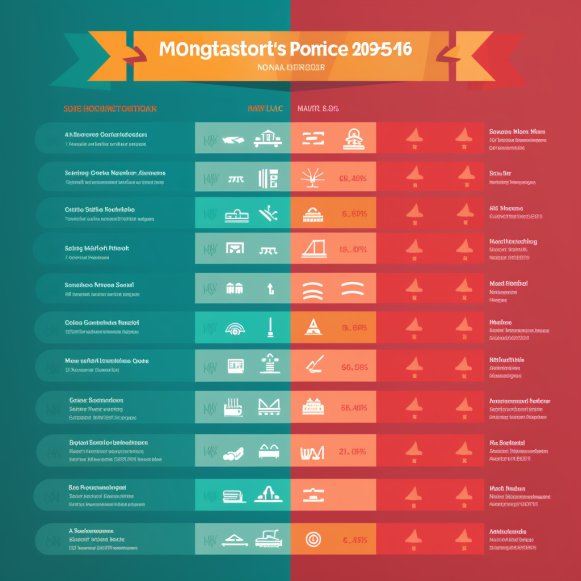‘We are at the very onset of a recession right now’: A top Wall Street strategist shares a ‘huge red flag’ signaling the economy is heading into a downturn — sending stocks tumbling as much as 20%

- Michael Kantrowtiz believes the US economy is likely heading into a recession.
- Kantrowitz said the change in the number of unemployed persons year-over-year is a “red flag.”
- This is the Piper Sandler strategist’s go-to recession indicator.
When the Federal Reserve starts raising interest rates, Michael Kantrowitz of Piper Sandler uses a four-step framework to assess how the US economy is doing. He calls it HOPE, an acronym that stands for “housing,” “orders,” “profits,” and “employment.”
His theory five years ago was that higher interest rates would first affect housing, then new manufacturing orders, corporate profits, and finally the labor market.
So far, the current hiking season has followed Kantrowitz’s predictions. Housing remains weak, as evidenced by low sales volume and low confidence among homebuilders. Manufacturing is contracting, according to the Institute for Supply Management’s Purchasing Managers’ Index. Furthermore, corporate profit growth has slowed noticeably.
Employment is the only shoe that has yet to drop. And Kantrowitz, who was named one of the top three equity strategists on Wall Street by Institutional Investor in October 2022, sees signs that the labor market will indeed deteriorate, even as some on Wall Street begin to revise their recession forecasts.
In a recent note to clients, Kantrowitz outlined the evidence he’s seeing that suggests a downturn is on the way. One data point is the percentage change in unemployed people from year to year. Kantrowitz’s rule of thumb for determining whether the US economy is in a recession is whether the unemployment rate has risen by 10% or more. It is currently up 7.7% year on year and rising, prompting Kantrowitz to call it a “huge red flag for me.”
“This is our preferred ‘rule’ for quantifying the onset of a recession: whenever the percentage change in unemployed persons exceeds 10%, we’ve always had a recession.” “This is similar to Ms. Sahm’s rule, but it avoids potential volatility from the participation rate,” Kantrowitz explained, referring to the Sahm rule, which states that a 0.5% increase in the unemployment rate on a three-month rolling average basis signals the beginning of a recession. Claudia Sahm, the Federal Reserve economist who devised the rule, is honored with its name.
Nonetheless, while the unemployment rate has risen to 3.9% from 3.4% earlier this year, claims for unemployment benefits have not increased significantly. Kantrowitz, on the other hand, believes they will, citing the link between rising claims and homebuilder sentiment.
“Regarding employment – I see enough data that has me convinced that we are at the very onset of a recession right now,” Kantrowitz said in a statement.
While Kantrowitz did not address his S&P 500 outlook in this client note, his S&P 500 price target range is 3,600-3,800. With the index currently hovering around 4,500, a drop to 3,600 would represent a 20% drop.
A crucial stretch for the economy
Data will continue to tell the story of how the US economy is faring in the face of the Fed’s most aggressive rate hike cycle in four decades in the coming months.
If the unemployment rate rises even slightly, the aforementioned Sahm rule will be activated. And there are reasons to believe that the labor market will continue to deteriorate.
According to Jon Wolfenbarger, the founder of investing newsletter BullAndBearProfits.com, small businesses are cutting back on hiring plans, according to the National Federation of Independent Business. Typically, this indicates an increase in unemployment.
Wolfenbarger also mentioned that the re-steepening of the Treasury yield curve after periods of inversion usually coincides with a weakening of the labor market.
The October non-farm payrolls report released earlier this month revealed that job growth has slowed. The US economy added 150,000 jobs, falling short of the 180,000 predicted by economists. Since December 2020, it was the second-lowest month for job growth. The figures for September and August were also revised downward.
Other leading recession indicators, such as the Treasury yield curve and The Conference Board’s Leading Economic Index, also point to a downturn.
Many market observers, including DoubleLine Capital CEO Jeffery Gundlach and Citadel founder Ken Griffin, predict a recession in 2024.
Many, however, continue to predict a soft landing. In recent notes, Goldman Sachs Chief US Economist Jan Hatzius stated that the rest of the Federal Reserve’s fight against inflation will be easy, and that the chances of a recession in the next year are only 15%. Bank of America CEO Brian Moynihan recently stated that he is optimistic about the US economy’s prospects in 2024, owing to a still-strong consumer.





